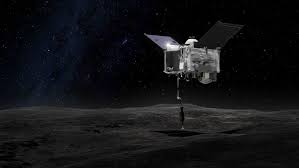
Breaking News
 The Days of Democracy Are Over
The Days of Democracy Are Over
 Elon Musk Described an AI Device to Replace Phones in 5 Years
Elon Musk Described an AI Device to Replace Phones in 5 Years
 Deposit Insurance For Billionaires?
Deposit Insurance For Billionaires?
 Rep. Troy Balderson Is Right: Coal And Gas Drive Affordable, Reliable, And Clean Energy
Rep. Troy Balderson Is Right: Coal And Gas Drive Affordable, Reliable, And Clean Energy
Top Tech News
 Graphene Dream Becomes a Reality as Miracle Material Enters Production for Better Chips, Batteries
Graphene Dream Becomes a Reality as Miracle Material Enters Production for Better Chips, Batteries
 Virtual Fencing May Allow Thousands More Cattle to Be Ranched on Land Rather Than in Barns
Virtual Fencing May Allow Thousands More Cattle to Be Ranched on Land Rather Than in Barns
 Prominent Personalities Sign Letter Seeking Ban On 'Development Of Superintelligence'
Prominent Personalities Sign Letter Seeking Ban On 'Development Of Superintelligence'
 Why 'Mirror Life' Is Causing Some Genetic Scientists To Freak Out
Why 'Mirror Life' Is Causing Some Genetic Scientists To Freak Out
 Retina e-paper promises screens 'visually indistinguishable from reality'
Retina e-paper promises screens 'visually indistinguishable from reality'
 Scientists baffled as interstellar visitor appears to reverse thrust before vanishing behind the sun
Scientists baffled as interstellar visitor appears to reverse thrust before vanishing behind the sun
 Future of Satellite of Direct to Cellphone
Future of Satellite of Direct to Cellphone
 Amazon goes nuclear with new modular reactor plant
Amazon goes nuclear with new modular reactor plant
 China Is Making 800-Mile EV Batteries. Here's Why America Can't Have Them
China Is Making 800-Mile EV Batteries. Here's Why America Can't Have Them
NASA's OSIRIS-REx collects sample from surface of asteroid Bennu

Launched atop an Atlas/Centaur booster from Space Launch Complex 41 at Cape Canaveral Air Force Station in Florida on September 8, 2016 at 7:05 pm EDT, the robotic OSIRIS-REx probe spent four years matching orbits to rendezvous with Bennu before making a detailed survey of the body's surface to find a safe area of scientific interest.
Because Bennu is 205 million miles (330 million km) from Earth, it takes a radio signal 18 minutes to reach the spacecraft from mission control, so today's Touch-And-Go (TAG) maneuver was carried out under completely autonomous control by the onboard computer, relying on updated instructions from NASA engineers.
During the approach, the robotic arm called the Touch-And-Go Sample Acquisition Mechanism (TAGSAM) was deployed with its disk-shaped sample collection head forward and the solar panels angled back to avoid accidental contact with the asteroid. The spacecraft then slowly approached the 26-ft (8-m) diameter "Nightingale" landing site from its normal orbit altitude of 2,500 ft (770 m) using its Natural Feature Tracking system to make a safe approach and then pull back from Bennu before a collision could occur

 China Innovates: Transforming Sand into Paper
China Innovates: Transforming Sand into Paper

